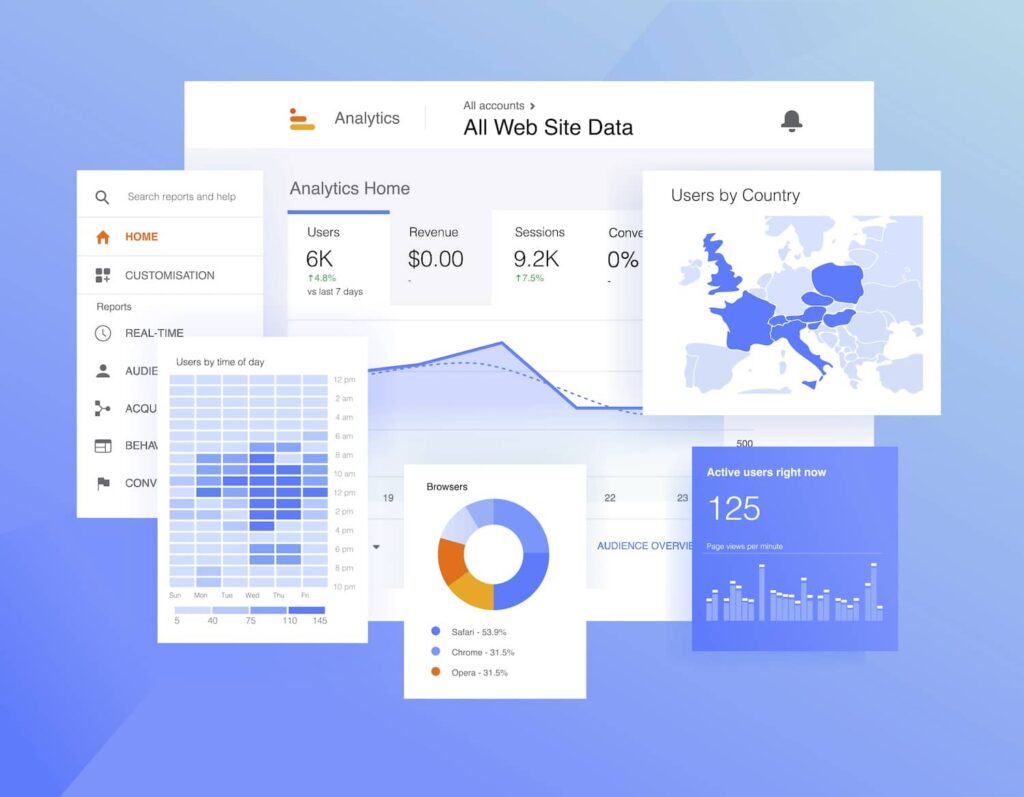Using the Power of Secondary Measurement in Google Analytics to Refine Your Marketing Technique and Drive Results
Leveraging the power of second measurements within Google Analytics opens up a realm of opportunities for marketing experts looking for to acquire much deeper understandings into individual habits and customize their campaigns with accuracy. The possible to determine campaign effectiveness with a granular lens better stresses the relevance of harnessing this tool to drive success.
Comprehending Secondary Dimensions
When evaluating information in Google Analytics, comprehending second dimensions is essential for obtaining much deeper understandings into individual habits and site performance. Main dimensions give fundamental information such as the variety of users or sessions, yet secondary measurements offer a more detailed view by permitting customers to section and examine information even more. By adding a secondary dimension, marketers can improve their evaluation and discover beneficial patterns that may have otherwise gone undetected.
Secondary measurements in Google Analytics can be related to numerous metrics such as traffic sources, individual demographics, and actions circulation. By integrating the main dimension of 'touchdown pages' with the additional dimension of 'gadget group,' marketing professionals can identify which devices are driving traffic to particular touchdown pages (what is a secondary dimension in google analytics). This info can assist maximize site layout and web content for far better user experience throughout various tools
Studying Customer Actions Patterns
To efficiently understand individual behavior patterns, an extensive analysis of information within Google Analytics is vital. By delving into user habits patterns, marketers can gain important understandings into exactly how site visitors communicate with their website, which web pages are most interesting, and where possible traffic jams or drop-off factors might exist in the conversion funnel. Google Analytics provides a variety of tools to assess user behavior, such as actions flow records, event tracking, and goal funnels.
Behavior flow records give an aesthetic depiction of how customers browse via the site, revealing one of the most usual courses individuals take as well as where they leave. Event monitoring allows marketers to check details communications on the website, such as button clicks or video views, giving a deeper understanding of customer involvement. Objective funnels track the actions users take in the direction of completing a details objective, highlighting locations for renovation in the conversion procedure.
Enhancing Target Market Segmentation
Upon assessing user behavior patterns, marketers can further enhance their methods by improving audience segmentation techniques in Google Analytics. Audience segmentation allows for the categorization of internet site visitors into certain teams based upon numerous qualities such as demographics, habits, and interests. By utilizing Google Analytics' second measurements, marketing professionals can fine-tune these sectors also additionally to get much deeper insights right into their audience's actions and preferences.
Enhancing target market segmentation enables marketing professionals to produce even more targeted and customized advertising and marketing projects. By recognizing distinct user groups, online marketers can customize their messaging, content, and offers to better resonate with each section's special characteristics and needs. This degree of personalization can significantly enhance engagement, conversion rates, and overall advertising and marketing efficiency.
Furthermore, with improved audience division, online marketers can better recognize the consumer journey and optimize touchpoints along the course to conversion. By assessing just how different sectors engage with the website and marketing networks, marketing professionals can recognize chances to enhance user experience, address discomfort points, and ultimately drive more conversions. Overall, refining audience segmentation in Google Analytics is an effective method for optimizing advertising and marketing performance and driving sustainable organization growth.
Tailoring Advertising Campaigns
Marketing experts can optimize their advertising and marketing projects by customizing web content and messaging to suit the distinct features and demands of certain audience sectors. Tailoring marketing campaigns entails producing customized experiences that reverberate with different groups of consumers. By leveraging understandings from additional dimensions in Google Analytics, marketing professionals can get a deeper understanding of their target market's actions, preferences, and demographics. This information enables the production of targeted campaigns that speak straight to the passions and pain factors of details segments, enhancing the likelihood of involvement and conversion.
Through the evaluation of secondary dimensions such as traffic sources, gadgets made use of, or geographical place, online marketers can tweak their messaging to be more impactful and relevant. For instance, a shopping business might discover through Google Analytics that visitors from social networks networks have a higher conversion rate than those from natural search. Equipped with this expertise, the business can readjust its advertising and marketing approach to focus more on social networks platforms to drive better outcomes. By customizing advertising projects based upon understandings from secondary measurements, services can maximize the effectiveness of their initiatives and eventually drive better ROI.
Measuring Project Effectiveness

One critical element of determining project effectiveness is tracking conversions. By establishing goals in Google Analytics, businesses you could look here can monitor certain actions taken by customers as an outcome of the project, such as buying or signing up for a newsletter. Understanding the conversion price and the top article conversion course can supply beneficial insights into the performance of various marketing networks and messages.
Furthermore, evaluating metrics such as click-through rates, bounce rates, and session duration can aid marketing experts evaluate user engagement and the effect of the campaign on site traffic. By incorporating main metrics with additional dimensions in Google Analytics, services can refine their marketing approaches, enhance project performance, and drive better outcomes.
Verdict
Finally, utilizing the power of secondary dimensions in Google Analytics can supply beneficial understandings right into customer habits patterns, improve audience segmentation, tailor advertising and marketing projects, and action campaign performance. By utilizing this attribute properly, companies can fine-tune their marketing strategies and drive better outcomes. It is vital for marketing experts to leverage the data readily available through secondary measurements to make informed choices and maximize their advocate optimal influence.
